This article on ‘Blizzard’s Unique Take on Warcraft Rumble Monetization System’ was available earlier as part of the GamerBraves Newsletter. Sign up for free to gain access to more articles about news and trends in the gaming industry and community.
Warcraft Rumble, Blizzard Entertainment’s latest action strategy mobile title has landed on the phones of players since November 3rd of this year, and with it comes a rather unique take on monetization.
As a free-to-play mobile title, it is undoubtedly that Blizzard would have to find ways to monetize Warcraft Rumble, and the developers had come up with a monetization system like none other.
After going through the first few stages and unlocking the store page, players are greeted with a peculiar setup. Rather than the usual loot boxes or battle passes, the top portion of Warcraft Rumble’s store page is made up of a grid layout with characters or spells within the boxes.
Suitably named the G.R.I.D., this aspect of the store serves as the general framework for both monetization as well as player progression.
What is the G.R.I.D.
As mentioned, the G.R.I.D. is a 3×3 layout with the various units known as Minis residing in the boxes and up for sale. When players purchase a unit in one of the boxes, all other items that are horizontally or vertically aligned to the said unit will be reset, introducing a new wave of Minis to appear.
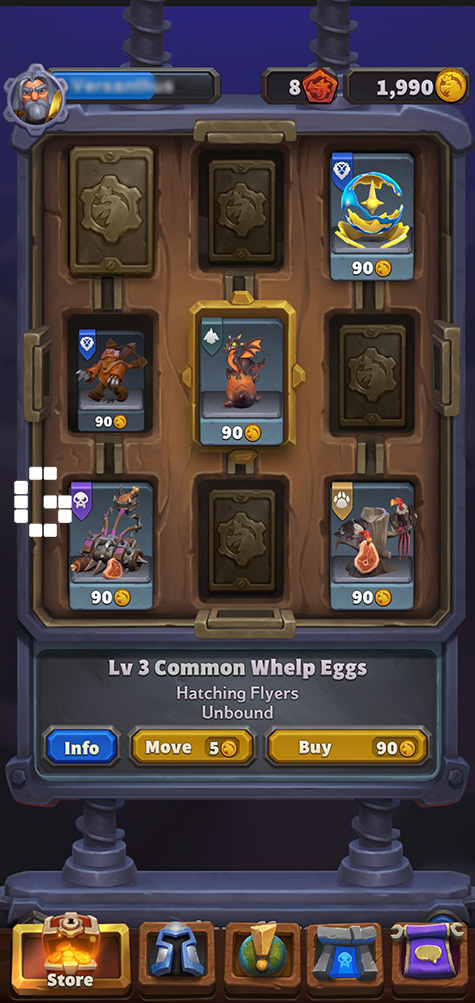
The G.R.I.D. uses in-game gold as its currency, which is earnable through completing the PvE maps or top-up through real-world money. The way the G.R.I.D. works means that players know what they are going to buy as any unit displayed on the layout is guaranteed with no strings attached. This gives players more control over their spending as compared to the loot box system such as those from gacha games where most items are tied to random chances.
Minis and Talents
As a strategy game, the many Minis are crucial in the players’ progression, and having different units enables different tactics to clear stages or win against others in PvP.
These Minis range from regular troops to the iconic characters of Warcraft as the Leaders, and players can purchase Upgrade Cores from the G.R.I.D. to improve their rarity. Apart from the Minis’ own innate abilities, there is also a mechanic in the game known as Talents.
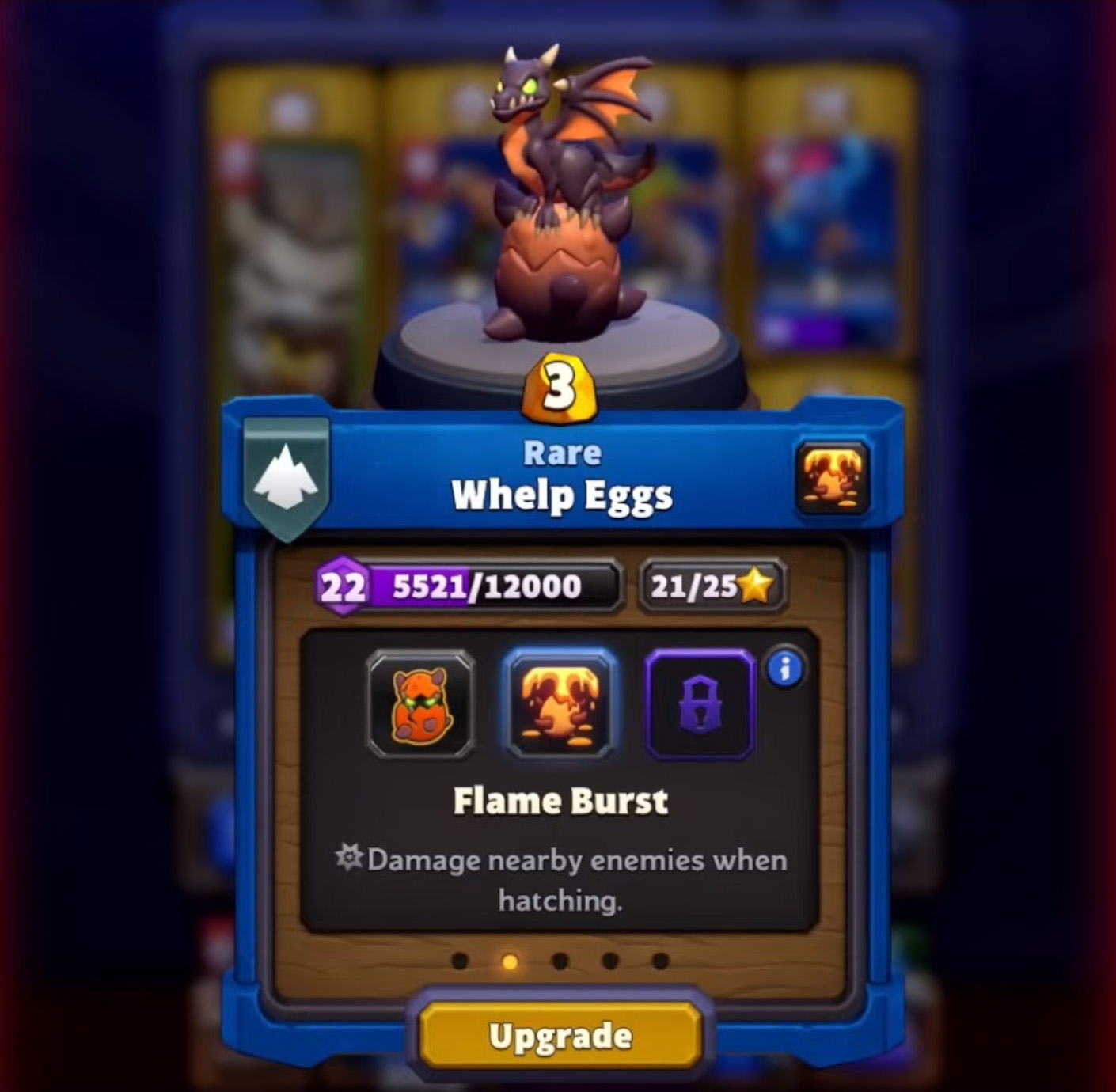
Talents are essentially passive abilities that a Mini can equip themselves to gain powerful effects and each unit has three Talents that can be unlocked.
Similar to the units themselves, the way to obtain Talents is tied to the G.R.I.D. itself and players would need at least 3 additional duplicate copies of a Mini to unlock the first Talent slot. As each regular unit costs 90 gold, this means it takes 270 gold to unlock the first Talent slot.
Once a unit has its Talent slot unlocked, the G.R.I.D. would then have a chance to sell any of the Talents for 250 gold each. Given the amount of Minis available in the game, the randomness of what unit or Talents show up does mean that players would need some luck if they are seeking a specific one. Especially since aside from the daily reset, the only way for new waves of units or Talents to show up is by spending and purchasing Minis to refresh the grid and its catalog.
Money to Gold
As mentioned previously, gold can be earned through playing the game or simply exchanging real-world money with the in-game currency. While players are not forced to shell out money, there are a good amount of Minis and Talents to unlock, thus the price can add up quickly.
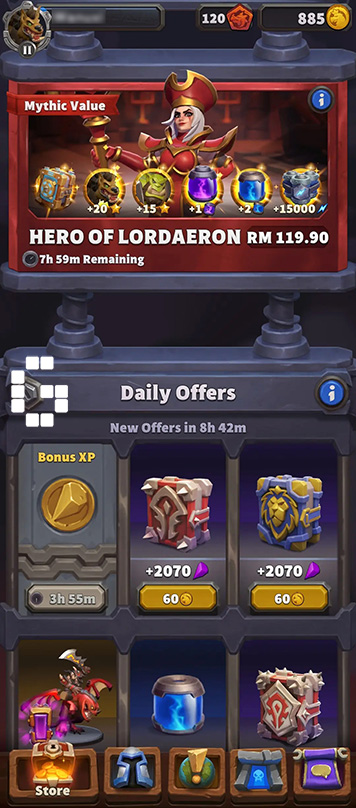
To entice players, the store has special Offers each day, offering a value far better than what players can normally exchange for through the permanent gold top-up purchase. To add, players would also be greeted with limited-time offers upon completing a set amount of PvE stages, packaged with discounted items and gold.
G.R.I.D. vs Other Monetization Tactics
All that aside, how does Warcraft Rumble’s monetization compare with other more traditional monetization strategies such as loot boxes, traditional cash shops, and so on?
In most free-to-play mobile games, the common ways in which developers monetize their titles is through the use of some form of energy or stamina system, limiting the amount of playable time per day. Blizzard does away with such a system when it comes to the monetization of Warcraft Rumble as players can clear through PvE stages so long as their units are well leveled for the tasks.
This allows for more play time for players whereas other games restrict their player base and force them to shell out their hard-earned money to play more or wait until sufficient stamina is regained.

Other ways developers monetize their mobile games include daily deals with limited purchases on characters such as the one from Warcraft Rumble’s direct competitor, Clash Royale. This system greatly limits how many units the player can earn in a day while the G.R.I.D. allows players to obtain units so long as they have enough gold to spend.
G.R.I.D. vs Gacha
The biggest merit that the G.R.I.D. system provides is that players will always be aware of what they are going to purchase, while loot boxes are all tied to random chances. So long as players save up enough, they can unlock any unit on the G.R.I.D. including the Leaders, while in most gacha games, some players may not be able to collect certain characters due to the low rates the loot box system tends to have.

That being said, a thing to note is that the G.R.I.D. system does have a level of randomness in it as units players are aiming for may not show up even if they have reset the grids through multiple Mini purchases. Since players have to purchase Minis to reset the G.R.I.D. catalog, they would eventually run out of gold if they do it regularly.
It is fair to criticize the poor chance rate of obtaining characters through loot boxes, however, a lot of gacha games in recent years have been introducing ways to circumvent the issue and provide players some degree of fairness with the pity and spark system.
A pity is a system in place to increase the probability of the featured item being dropped to the point of a guarantee. Meanwhile, the spark system can be described as loot box items dropping an extra in-game currency that can be used to exchange for characters.
In a way similar to the G.R.I.D., both systems also require players to spend more to increase the odds. However, the pity and spark system does provide a guarantee on the target character after a set amount of spending, while G.R.I.D. does not have any guarantee in place.
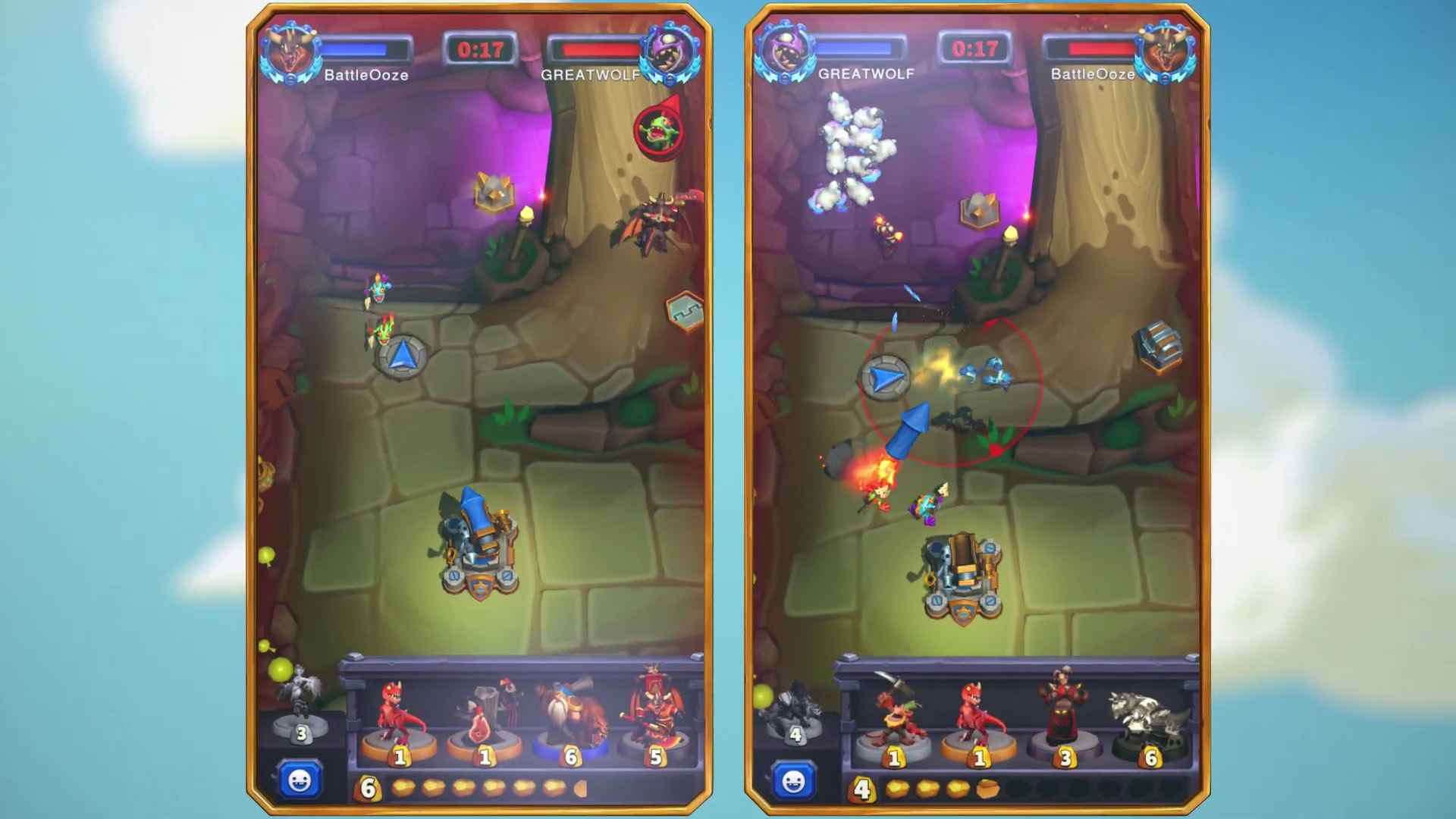
Monetization Fairness
Regardless of the randomness, Blizzard’s willingness to go with a different monetization approach for Warcraft Rumble is worth the praise and it is certainly generating a fair amount of revenue for the company in the 2 weeks since its launch. In only 2 weeks, the game had netted a total of $8,631,301 USD and garnered 2,933,887 downloads.
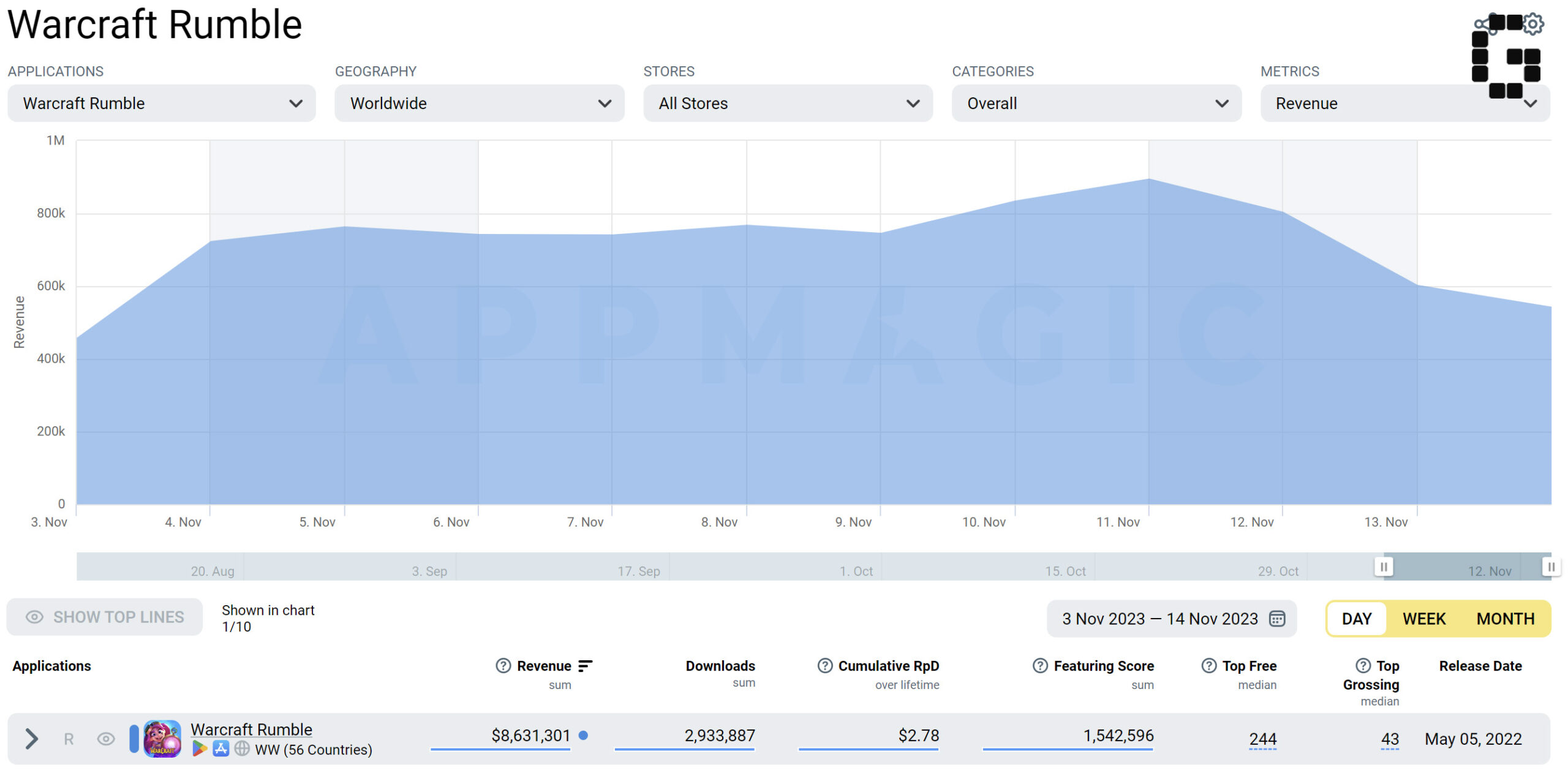
Like any monetization system, there are pros and cons, as well as some level of tolerance players have. A thing to note is that the G.R.I.D. itself uses in-game currency, so it means players do not exactly need to shell out money for new characters. What you see is what you get and by chance, even if players may be starting on their first day, they may even get some great units on the G.R.I.D. quickly.
That being said, due to how the G.R.I.D. is set up, there is certainly some element of fear of missing out as specific units and Talents players aim to show up in the store, especially since Talents can be rather impactful.
As reiterated multiple times, the best way to increase the odds of a target Mini showing up is through repeated purchases of units and refreshing the G.R.I.D.’s catalog. The price of Mini and Talent purchases adds up and reckless spenders could hit a limit quickly and be tempted to spend real-world money.












![[SEA Exclusive] From Shadows to Shipwrecks – Jennifer English Talks About Bringing Emotional Depth to Clair Obscur: Expedition 33](https://cdn.gamerbraves.com/2025/04/Clair-Obscur-Jennifer-English_Interview_FI-360x180.jpg)

![[EXCLUSIVE] Do the Game Interview – An Intimate Look at the Challenges of Game Development](https://cdn.gamerbraves.com/2025/04/Do-the-Game_Interview_FI-1-360x180.jpg)
![[EXCLUSIVE] Interview with the Minds Behind of Den of Wolves – 10 Chambers’ New Sci-Fi Heist FPS](https://cdn.gamerbraves.com/2025/04/Den-of-Wolves_Interview_FI-360x180.jpg)









![[GUIDE] Finding Alma’s Lost Glasses in The Apple of Her Eye Side Quest](https://cdn.gamerbraves.com/2025/04/Alma-Glasses-Quest_Gudie_FI-360x180.jpg)



![[GUIDE] Farming Nightflower Pollen in Monster Hunter Wilds](https://cdn.gamerbraves.com/2025/03/MHWilds-Pollen_Guide_FI-360x180.jpg)